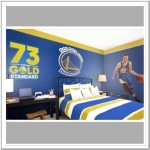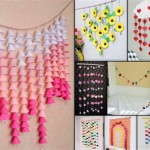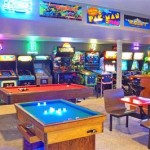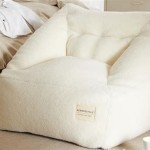How To Decorate a Bachelor Apartment: Creating a Functional and Stylish Space
Decorating a bachelor apartment presents a unique opportunity to create a living space that reflects personal style and caters to functionality. The goal is to transform a potentially sterile environment into a comfortable, inviting, and efficient home. Effective design considers both aesthetics and practicality, focusing on creating a space that is both visually appealing and conducive to everyday living.
The decoration process should begin with a thorough assessment of the apartment's existing features: the size, layout, natural light availability, and any architectural limitations. Understanding these foundational elements is crucial for formulating a cohesive and effective design plan. This initial assessment informs subsequent decisions on furniture selection, color palettes, and overall style choices.
Prioritizing Functionality in a Compact Space
Bachelor apartments are often characterized by limited square footage, making efficient use of space a paramount consideration. Multi-functional furniture is invaluable in maximizing utility without sacrificing style. A sofa bed, for example, can serve as both seating and sleeping arrangements for guests. Similarly, coffee tables with hidden storage compartments can provide discreet space for storing items such as remote controls, books, or blankets.
Wall-mounted shelves offer vertical storage, freeing up floor space and providing display areas for personal items, books, or decorative objects. Consider utilizing vertical space effectively by installing shelves at varying heights to create visual interest and maximize storage capacity. These shelves can also double as a display for a curated collection of artwork or personal mementos, adding a touch of personality to the apartment.
When selecting furniture, prioritize pieces that are appropriately scaled for the apartment’s dimensions. Oversized furniture can overwhelm a small space, making it feel cramped and cluttered. Opt for smaller, more streamlined pieces that allow for easy movement and maintain a sense of openness. Modular furniture, such as sectional sofas or customizable shelving units, offers flexibility and can be adapted to evolving needs and preferences.
The layout of the apartment is also crucial for optimizing functionality. Define distinct zones for different activities, such as sleeping, working, and entertaining. Arrange furniture in a way that facilitates flow and movement, avoiding obstructions that can make the space feel cramped. Consider using rugs to delineate different areas and anchor furniture groupings, creating a sense of cohesion and visual separation.
Good lighting is essential for enhancing both functionality and ambiance. Layer different types of lighting, including ambient, task, and accent lighting, to create a well-lit and inviting space. Ambient lighting provides overall illumination, while task lighting is focused on specific areas, such as a desk or reading chair. Accent lighting highlights architectural features or artwork, adding visual interest and depth. Incorporate dimmer switches to adjust the lighting levels and create different moods as needed.
Organization is key to maintaining a functional and clutter-free bachelor apartment. Implement storage solutions that are both practical and aesthetically pleasing. Baskets, bins, and organizers can help keep belongings neatly stored and out of sight. Regularly decluttering the space and eliminating unnecessary items is essential for maintaining a sense of order and efficiency.
Selecting a Cohesive Style and Color Palette
Establishing a cohesive style and color palette is fundamental to creating a visually appealing and unified living space. The chosen style should reflect personal taste and preferences, while the color palette should complement the apartment's architecture and natural light. Research different design styles to identify one that aligns with individual preferences and lifestyle.
Popular styles for bachelor apartments include modern, minimalist, industrial, and mid-century modern. Modern style is characterized by clean lines, neutral colors, and a focus on functionality. Minimalist style emphasizes simplicity and decluttering, with a limited color palette and minimal ornamentation. Industrial style incorporates raw materials, such as exposed brick, concrete, and metal, creating a rugged and masculine aesthetic. Mid-century modern style features retro-inspired furniture, bold colors, and geometric patterns.
Once a style has been selected, choose a color palette that complements the chosen aesthetic. Neutral colors, such as gray, beige, and white, are versatile and provide a blank canvas for adding pops of color through accessories and artwork. Darker colors, such as navy blue, charcoal gray, and deep green, can create a sophisticated and masculine ambiance. Consider using an accent color to add visual interest and personality to the space.
When selecting colors, consider the apartment's natural light. Rooms with abundant natural light can handle darker colors without feeling cramped, while rooms with limited natural light benefit from lighter colors that reflect light and create a sense of spaciousness. Sample paint colors on the walls before committing to a final choice, and observe how the colors look under different lighting conditions.
Incorporate texture and pattern to add depth and visual interest to the space. Use different materials, such as wood, leather, metal, and fabric, to create a layered and tactile environment. Incorporate patterns through rugs, curtains, or throw pillows to add personality and visual appeal. Be mindful of scale and proportion when mixing patterns, and avoid overwhelming the space with too many competing designs.
Pay attention to the details, such as hardware, lighting fixtures, and accessories, to ensure that they complement the overall style and color palette. Choose hardware finishes that coordinate with the furniture and lighting fixtures. Select lighting fixtures that provide adequate illumination and enhance the overall aesthetic of the space. Incorporate accessories that reflect personal interests and add a touch of personality to the apartment.
Adding Personal Touches and Creating a Welcoming Atmosphere
Transforming a bachelor apartment from a generic space into a personalized and welcoming home requires the addition of personal touches that reflect individual interests and passions. This involves incorporating elements that contribute to a comfortable and inviting atmosphere, making the space feel truly lived-in and reflective of the occupant's personality.
Artwork plays a significant role in personalizing a space and adding visual interest. Select pieces that resonate with personal taste and preferences, whether it be paintings, photographs, prints, or sculptures. Consider the size and scale of the artwork in relation to the wall space, and arrange pieces in a way that creates a balanced and visually appealing composition. Framed posters of favorite movies, musicians, or artists can be an inexpensive yet effective way to inject personality into the space.
Personal collections, such as books, vinyl records, or sports memorabilia, can be displayed to showcase individual interests and create conversation starters. Arrange books on shelves in a visually appealing manner, and display vinyl records in frames or on a dedicated record rack. Sports memorabilia can be displayed in shadow boxes or on shelves, creating a focal point that reflects a passion for sports.
Plants add life and vibrancy to any living space, creating a more welcoming and inviting atmosphere. Choose plants that are easy to care for and thrive in the apartment's lighting conditions. Succulents, snake plants, and ZZ plants are low-maintenance options that can add a touch of greenery to the space. Consider using decorative pots and planters to complement the overall style of the apartment.
Comfortable textiles, such as throw pillows, blankets, and rugs, can add warmth and texture to the space, creating a more inviting and cozy atmosphere. Choose textiles that are soft and comfortable to the touch, and select colors and patterns that complement the overall style of the apartment. Layer different textures and patterns to add depth and visual interest.
Scent can also play a significant role in creating a welcoming atmosphere. Use candles, diffusers, or room sprays to create a pleasant and inviting scent in the apartment. Choose scents that are calming and relaxing, such as lavender, chamomile, or sandalwood. Avoid overpowering scents that can be overwhelming or irritating.
Finally, incorporate personal mementos and souvenirs that hold sentimental value. Display photographs, travel souvenirs, or other items that evoke happy memories and reflect personal experiences. These personal touches will make the apartment feel like a true home and create a welcoming atmosphere for guests.

A Complete Guide To Perfect Bachelor Pad

60 Stylish Bachelor Pad Bedroom Ideas Apartment Living Room Elegant Decor

Eight Bachelor Pad Ideas For A Ruggedly Cool Space Living Spaces

17 Studio Apartment Design Ideas For Small Spaces Extra Space Storage

Eight Bachelor Pad Ideas For A Ruggedly Cool Space Living Spaces

Bachelor Pad Featuring A Modern Décor With Accent Details From The 60s

How To Decorate A Studio Apartment On Budget Mckinley

Pin On Bachelor Pads Interior Design

60 Stylish Bachelor Pad Bedroom Ideas Decoist

How To Decorate A Studio Apartment 33 Ideas







